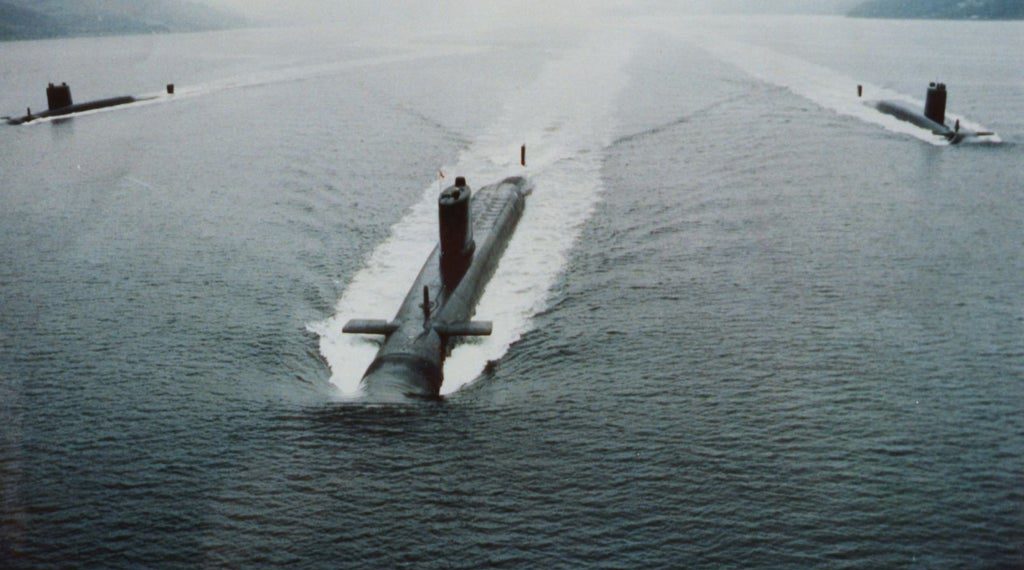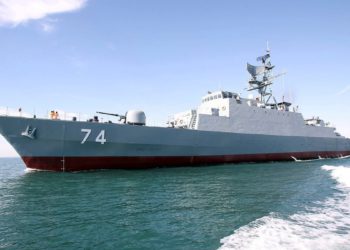No Submarine Disposed of After its Retirement
The Royal Navy has 20 retired nuclear submarines in storage in the ports of Rosyth (7) and Devonport (13).
This means the UK now has more retired submarines in its inventory than it has in active service!
In fact, the UK has never managed to dispose of a single nuclear submarine after having retired it. Resolution, Repulse, Renown and Revenge, the four Resolution class SSBNs are still in storage, despite the fact the last ones were retired from service in 1996.

HMS Dreadnought has been sitting in Rosyth for over 38 years.
HMS Conqueror, which sank the Belgrano in 1982, is also still waiting to be dismantled.

Some of those retired submarines have now sat in storage for longer than they originally served in active service.
Back in 1989, the MoD had plans to sink its disused subs on what it called “seabed storage areas”, near the Isle of Skye, in Scotland. The official plan was to store the subs underwater for 60 years, to allow radioactivity levels to subside.
The real plan was to remove the subs from the public eye and hope everyone would forget about them, so the subs could slowly rot away. When the plan became public, it provoked public outrage, especially in Scotland. So another solution had to be found.
To make matters worse, still, a fair amount of the subs stored in Devonport haven’t been defueled. In 2002, the Office of Nuclear Regulation stopped defueling operations in Devonport, because the facilities did not meet modern standards.No submarine has been defueled ever since.
All those retired submarines are subjected to periodic inspections and are re-painted every 15 years, which require them to be taken out of the water. The ones that are still fueled have a skeleton crew 24/7.
Since 1980 the MoD has spent £500m just to store and maintain its obsolete submarine fleet while it tries to figure out how to safely dismantle them and where to store the fuel removed from the subs reactors.
The defueling process is scheduled to restart in 2023 and a nuclear fuel storage site has been chosen in Capenhurst (Cheshire), although this site is said to be only temporary, with a long term storage site yet. to be chosen.
It is estimated that the cost of disposing of each submarine will be put at around £96 million per unit, although the cost may vary from one class to another.
The Russians had the same problem, in the 1990s. Russian nuclear submarine graveyards became famous around the world, with images of rusting subs, abandoned in their home port and posing a serious ecological threat being broadcast globally.
The problem for the Russians, at the time, was money. They had sites to store nuclear fuel. They simply did not have the money to dispose of their retired submarines themselves.
The US Provided Funds to Russia to Dismantle
For a while, the US provided funds to help the Russian secure and safely dismantle their unused subs.
But things changed In 2003 when work started on the decommissioned submarine nuclear reactor storage facility in Sayda Guba, near Murmansk.
Germany provided $700 million to help see the project to completion. The storage facility opened in 2017 and can provide storage for up to 150 submarine sections (containing a nuclear reactor).
When a nuclear submarine is decommissioned, its nuclear fuel is removed and treated/stored and its reactor is taken out. In fact, the reactor stays in its section and it is the whole section containing the reactor that is cut out from its submarine so that the radioactivity is contained.
The section is then stored in Sayda Guba, beyond the polar circle. Each section must remain there for 70 years to allow radioactivity within it to fall to safe levels so the reactor itself can be dismantled.
Each section is maintained for the duration of its stay and repainted every 10 years to ward off corrosion and ensure containment.
The rest of the submarine is dismantled the conventional way, with metals and exotic alloys being scavenged and recycled.










